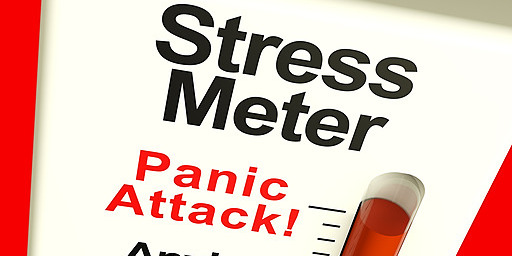Anxiety disorders are the most common of mental disorders and affect nearly 30 percent of adults at some point in their lives. Anxiety is more than just feeling stressed or worried. Anxiety is when these anxious feelings don’t subside and they are experienced even when you are not in danger.
Occasional anxiety is an expected part of life. You might feel anxious when faced with a problem at work, before taking a test, or before making an important decision. But anxiety disorders involve more than temporary worry or fear. For a person with an anxiety disorder, the anxiety does not go away and can get worse over time. The symptoms can interfere with daily activities such as job performance, school work, and relationships.
There are eight types of anxiety disorders.
- Generalised Anxiety Disorder (GAD).Generalized Anxiety Disorder involves persistent and excessive worry that interferes with daily activities accompanied by physical symptoms, such as restlessness, feeling on edge or easily fatigued, difficulty concentrating, muscle tension or problems sleeping.
- Social Anxiety Disorder (previously called Social Phobia).A person with Social Anxiety Disorder has significant anxiety and discomfort about being embarrassed, humiliated, rejected or looked down on in social interactions. People with Social Anxiety Disorder usually try to avoid the situation or endure it with great anxiety.
- Specific Phobias.A specific phobia is an excessive and persistent fear of a specific object, situation or activity that is generally not harmful. Examples are fear of flying or fear of spiders.
- Panic Disorder.The core symptom of Panic Disorder is recurrent panic attacks (an overwhelming combination of physical and psychological distress). Because some of the physical symptoms in a panic attack are so intense and mimic those in physical conditions (e.g. heart pounding and difficulty breathing) many people who experience a panic attack falsely believe they are having a heart attack or other life-threatening illness.
- Post-Traumatic Stress Disorder (PTSD).PTSD can happen after a person experiences a distressing and traumatic event (e.g. war, assault, accident, disaster). PTSD is most notably characterized by recurring and intrusive flashbacks of the traumatic incident and a sense of being ‘on edge,’ among other symptoms.
- Agoraphobia.Agoraphobia is the fear of being in situations where escape may be difficult or embarrassing, or help might not be available in the event of panic symptoms. The fear is out of proportion to the actual situation and lasts generally six months or more and causes problems in daily functioning.
- Separation Anxiety Disorder.A person with Separation Anxiety Disorder is excessively fearful or anxious about separation from those with whom he or she is attached. The feeling is beyond what is appropriate for the person’s age, persists at least four weeks in children and six months in adults, and causes problems with daily functioning.
- Obsessive compulsive disorder (OCD).A person with OCD has ongoing unwanted/intrusive thoughts and fears that cause anxiety. Although the person may acknowledge these thoughts as silly, the person often finds him or herself trying to relieve their anxiety by carrying out certain behaviours or rituals.
Learn More
For more information the following resources may be helpful.
- Understanding and Finding Help for Anxiety. https://ontario.cmha.ca/documents/understanding-and-finding-help-for-anxiety/
- Youth Anxiety. https://youth.anxietycanada.com/
- Anxiety Disorders Association of Ontario. http://www.anxietydisordersontario.ca/
- Mood Disorders Association of Ontario. https://www.mooddisorders.ca/faq/anxiety-and-mood-disorders
- Anxiety Disorders. Canadian Mental Health Association. https://cmha.bc.ca/documents/anxiety-disorders













